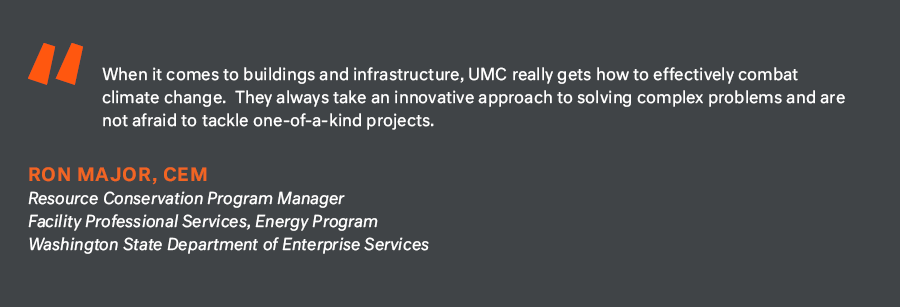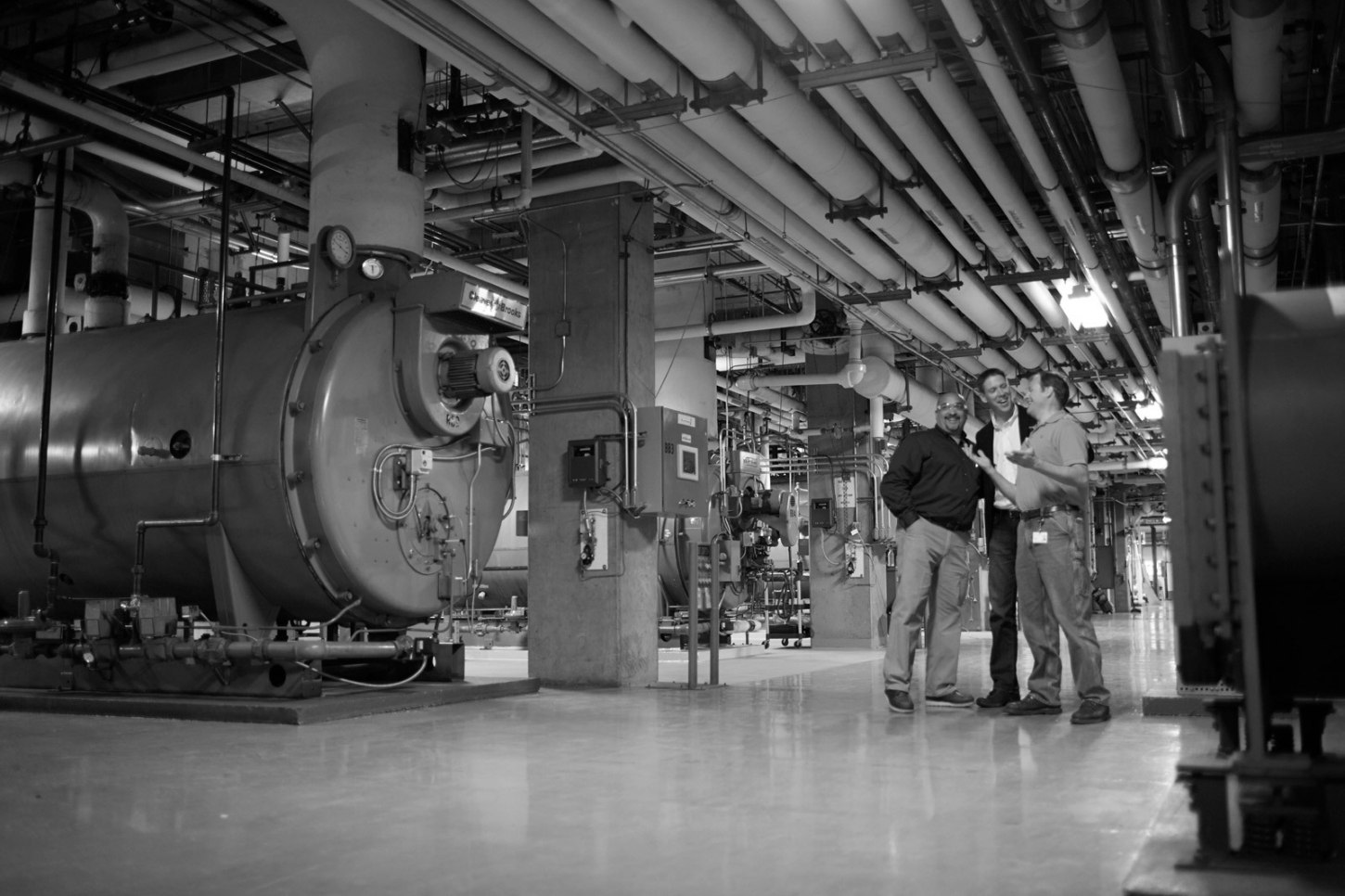
Managing aging facilities can be a difficult challenge, so it’s exciting to be able to give new life to your facility, cost-effectively. Renewing your infrastructure can break the cycle of band-aid repairs or prevent having to tear down and rebuild facilities. Upgrading and renewing infrastructure saves precious materials plus their “embedded” carbon and prepares a facility to operate efficiently for the next 50 years.
Building managers work to keep existing equipment in a reliable condition for many years, but as a building’s key systems age, operators notice less reliability, increased operating costs, lower comfort for occupants, and repairs that take much of their time and internal resources. These demands eat into a manager’s operating budget, preventing more productive use of those dollars.
Energy conservation is a worthwhile endeavor and can help remove some pressure on budgets, unfortunately many of the standard energy measures do little to improve operations, comfort, or reliability onsite. And in the process of saving energy, they sometimes add complexity. When you reach this point in your building's life cycle, you may be out of low-hanging fruit—and the question arises: how do I move beyond the day-to-day operations and simplistic energy upgrades while driving significant change and renewal of the aging infrastructure? And do it in a cost-effective way that accomplishes energy goals while preparing my building for the next 50 years of efficient operations?
UMC’s energy-focused development team looks deep into a facility and thinks holistically, measuring all future opportunities versus your current reality. Working in a goal-based partnership, UMC can guide you through a turnkey approach to redesign, modernize, and renew your building’s infrastructure. We help to cost-effectively meet your goals, including lower operating costs, increased reliability, enhanced occupant comfort, and energy efficiency. Often, this even moves you down the path towards future net-zero energy possibilities.

The team that works for you.
UMC is a different kind of energy service company (ESCO). We are a focused team of dedicated building experts including energy and design engineers, project managers, and hands-on constructors that use our hard-learned experience to solve our customers’ toughest infrastructure challenges. If you need help developing energy savings options, evaluating complicated facilities, working with multiple facilities or centralized plants, or more, UMC is an ideal partner. But if you are only looking at simpler projects such as changing light bulbs and temperature set points, we recommend you look to ESCOs that specialize specifically in these less complex upgrades.
UMC aims to provide the best long-term outcomes for a building—public facilities are meant to last for generations and so are our projects. Our performance has been guaranteed, measured, and verified, saving public entities millions of dollars in energy costs each year.
UMC is vendor-neutral and does not push proprietary technologies. We will work with you and your team to identify the best technologies for your facilities. It is important to know that even though this is a state-regulated process, there is enough room for UMC to have a better approach than some ESCOs.
Energy Savings Performance Contracting.
Washington State allows for public entities to finance infrastructure renewal projects through energy savings. The contractual mechanism is an Energy Savings Performance Contract (ESPC RCW 39.31A). The State regulates these contracts through the Department of Enterprise Services.
Not only does the ESPC process put UMC on the hook for performance and guaranteed pricing, both UMC and the agency are aligned to achieve your goals. There are no unexpected change orders or “gotcha” moments thrown at our customers. The process allows public groups to work through a non-binding investigation to identify potential energy saving opportunities and infrastructure renewal options.
The ESPC mechanism furthers your capital dollars, shortens project lead times, and improves project outcomes over traditional design-build processes. A common misconception is that ESPC contracts must pay for an entire project via energy dollar savings—this is not true. Washington State’s relatively low electricity rates and moderate climate mean few infrastructure renewal projects fully pay for themselves with energy dollar savings. However, the ESPC option is still the preferred procurement method for complicated projects as ESPC saves on procurement actions and allows you to do more with less. Through ESPC, we can help you design the best solution for your entire facility and tackle complicated projects simultaneously, such as converting from fossil fuels, incorporating waste heat resources, solving comfort issues, re-imagining building operating systems, upgrading ventilation air quality, and envelope modernization. A traditional bid process, coupled with both soft and construction costs, is open to risks borne by the customer. Facilities that are retrofitted without ESPC often result in building systems that are incongruent, don’t talk to each other, and fail to maximize efficiency. Contractually, non-ESPC processes involve numerous warranties and require you to hold vendors accountable for outcomes. But with the ESPC process, you only need to call UMC—accountable for all aspects of the project.
Values.
UMC’s team values ethical operation and aims to provide the best outcomes for our local buildings, community, and climate. With the ESPC system, we bear the risk and your building benefits. UMC is based and owned in Mukilteo, Washington. Unlike many other ESCOs, the money you spend with UMC stays in our local communities.
We know where we excel and when to partner with other firms. Our team works with you hand-in-hand to create alternatives, provide honest feedback, and develop the best recommendations possible for your facilities, even if that means recommending another firm that is better suited to the task. When it is time to tackle your facilities’ biggest challenges and bring new life to your systems, call UMC.
Authors
Michael Bergstrom is a Business Developer at UMC. He has a strong focus on identifying and developing targeted solutions that inspire high performance while reducing utility and operational costs for buildings across the region.
David McCaughey is a Senior Business Developer at UMC whose experience in healthcare and appreciation for local government mission and constraints seeks relationships founded on long-term economic and equitable sustainability.
Questions or Comments?
For media inquiries or related questions, please contact info@umci.com
